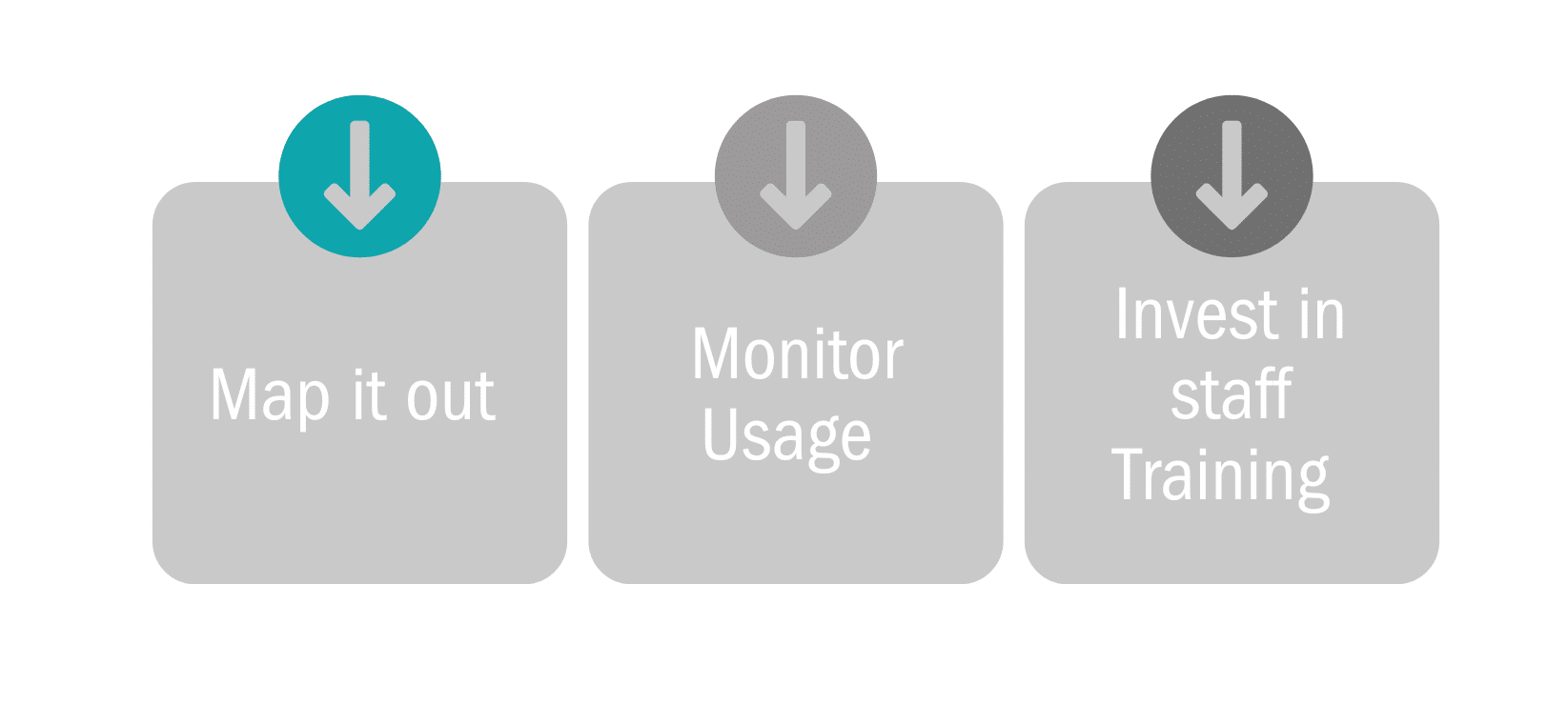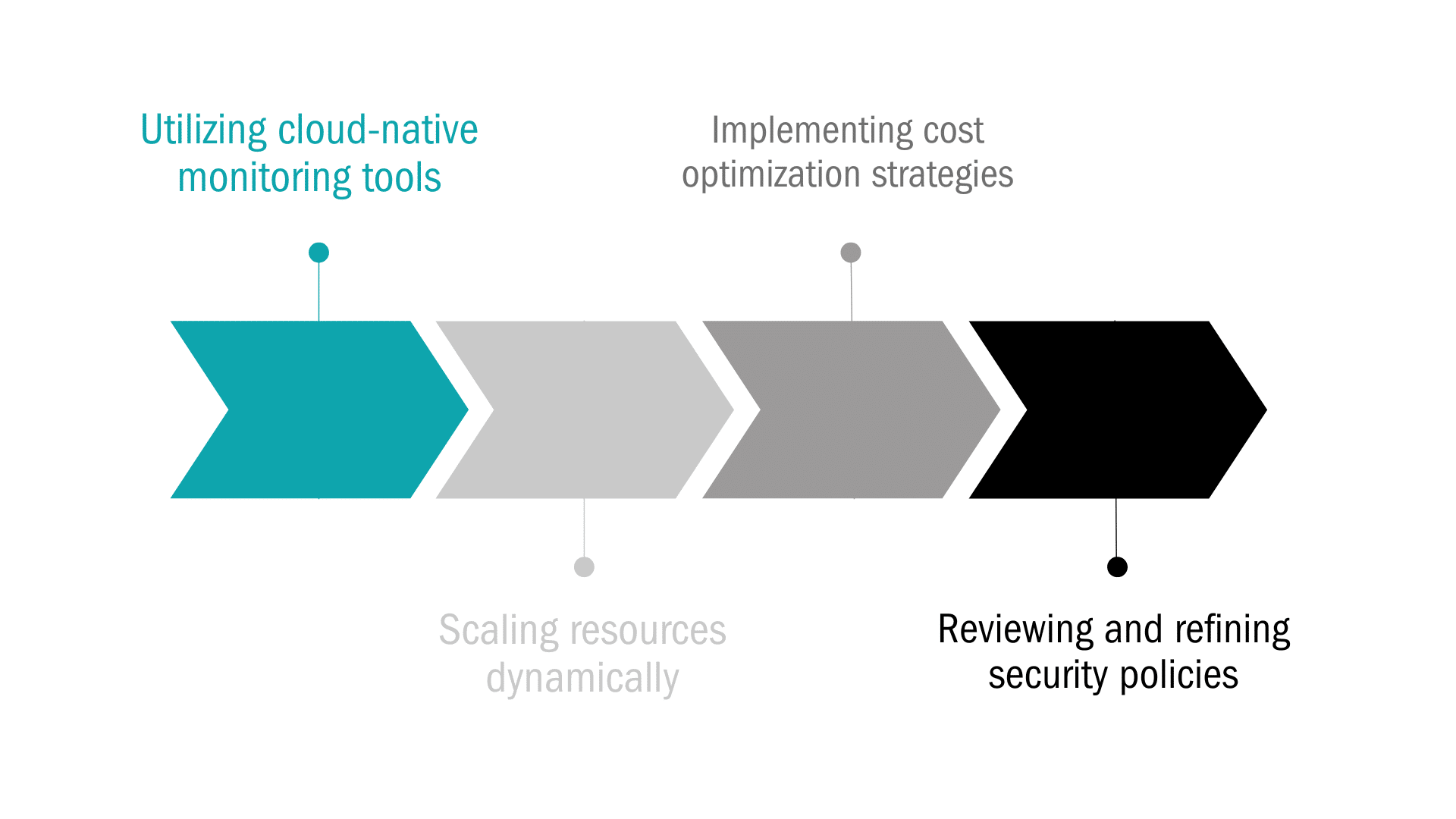For businesses looking to innovate and scale, cloud computing offers opportunities that traditional IT infrastructure simply can’t match. Cloud computing offers unparalleled scalability, cost efficiency, and operational flexibility, making it a cornerstone of modern IT strategy. And with more organizations prioritizing cloud adoption, the pressure to migrate efficiently has never been greater.
Cloud migration isn’t as simple as flipping a switch. Poor planning can lead to data loss, downtime, security vulnerabilities, and skyrocketing costs. Many businesses underestimate the complexities involved, from choosing the right cloud model to ensuring seamless data integration. Without a well-defined cloud migration strategy, companies risk disrupting operations, frustrating customers, and eroding trust.
Cloud migration isn’t as simple as flipping a switch. Poor planning can lead to data loss, downtime, security vulnerabilities, and skyrocketing costs. Many businesses underestimate the complexities involved, from choosing the right cloud model to ensuring seamless data integration. Without a well-defined cloud migration strategy, companies risk disrupting operations, frustrating customers, and eroding trust.
At thirtyone3 technology, we specialize in helping businesses navigate the complexities of cloud migration with tailored solutions that ensure security, efficiency, and long-term scalability. Whether you’re considering your first move to the cloud or optimizing an existing infrastructure, our expertise can help you achieve a seamless transition.
- 1. The Foundation of a Successful Cloud Migration Strategy
- 2. Building a Cloud Migration Roadmap
- 3. Cloud Migration Best Practices for Minimizing Risks
- 4. Overcoming Common Cloud Migration Challenges
- 5. Sustaining Success Post-Migration
- 6. Planning for a Smooth Cloud Migration with thirtyone3 technology
- 7. Need Help Getting Started?
- 8. Related Articles
The Foundation of a Successful Cloud Migration Strategy
A smooth cloud migration starts with a clear strategy and a deep understanding of your current IT environment. Without proper planning, businesses risk inefficiencies, unexpected costs, and disruptions that could impact operations. Taking the time to define objectives and assess infrastructure lays the groundwork for a seamless transition.
Define Your Goals and Objectives
Before making the move, it’s crucial to identify why you’re migrating to the cloud in the first place.
Are you looking to improve scalability? Reduce operational costs? Enhance security?
A well-defined cloud migration strategy aligns technology adoption with business objectives, ensuring that every decision serves a larger purpose.
Some key questions to ask during this phase include:
- What business problems will the cloud solve for us?
- Which applications and workloads are the highest priority for migration?
- Are we looking for full cloud modernization, or just moving existing systems?
- What security and compliance requirements must we meet?
By answering these questions early, businesses can avoid costly missteps and select the right cloud solutions tailored to their needs. Many companies begin by exploring the best cloud computing options to determine whether a public, private, or hybrid model aligns with their goals.
Assess Your Current IT Infrastructure
Not all workloads are equally suited for cloud migration. Some applications may require modernization, while others might not be cost-effective to migrate. Conducting a thorough infrastructure assessment ensures a migration plan that is both efficient and sustainable.
Key steps in this assessment include:
- Inventorying applications and databases to determine compatibility with cloud platforms.
- Identifying dependencies between systems to prevent disruptions.
- Evaluating performance needs, ensuring workloads will function optimally post-migration.
- Considering compliance and security factors, especially for industries with strict regulations.
This assessment helps businesses prioritize workloads and create a migration roadmap that minimizes downtime.
Building a Cloud Migration Roadmap
Once you’ve established clear goals and assessed your current IT infrastructure, the next step is creating a structured cloud migration roadmap. A well-planned roadmap minimizes disruptions, ensures a seamless transition, and helps your team stay on track throughout the process.
Choose the Right Cloud Provider and Mode
Not all cloud environments are created equal. Selecting the right provider—whether AWS, Microsoft Azure, Google Cloud, or a specialized service depends on your business requirements, security needs, and scalability expectations. Additionally, choosing between public, private, or hybrid cloud models impacts performance, cost, and control over your infrastructure.
Here are key factors to consider when selecting a cloud provider:
- Security and Compliance: Does the provider meet industry regulations like HIPAA or SOC 2?
- Scalability: Can the cloud environment grow with your business demands?
- Integration Capabilities: Will it work seamlessly with your existing applications and tools?
- Cost Structure: Does the pricing model align with your budget and expected usage?
- Support and Service Level Agreements (SLAs): What level of technical support is provided?
Choosing the right combination of cloud services is critical to long-term success. Businesses often weigh the pros and cons of cloud migration to determine which model will best support their needs.
Create a Detailed Migration Plan
Migrating everything at once can be risky. Instead, break the process down into phases to reduce downtime and ensure smooth implementation.
A structured migration plan should include:
- Workload Prioritization: Migrate low-risk applications first before tackling mission-critical systems.
- Data Migration Strategy: Define how data will be transferred while maintaining integrity and security.
- Downtime Minimization: Plan migrations during off-peak hours to reduce business impact.
- Rollback Plan: Have contingency measures in place in case issues arise.
A well-structured approach prevents costly mistakes and ensures a seamless transition without disrupting day-to-day operations.
Budget and Resource Planning
One of the biggest cloud migration challenges is unexpected costs. While cloud services are designed to be cost-effective, businesses often underestimate expenses related to licensing, data transfer fees, and additional security measures.
To avoid budget overruns:
- Map out all potential costs, including infrastructure, software, training, and support.
- Monitor usage carefully to optimize spending and avoid waste.
- Invest in staff training to maximize the benefits of the new cloud environment.
Cloud Migration Best Practices for Minimizing Risks
Even with a well-planned cloud migration roadmap, risks can arise if businesses don’t take the right precautions. From data security to business continuity, implementing best practices ensures a smooth transition with minimal disruptions.
Conduct Pilot Migrations Before Full Deployment
Migrating all workloads at once can lead to costly downtime and unexpected failures. Instead, start with a pilot migration to test the process on a smaller scale before rolling out a full transition.
To ensure a successful pilot migration:
- Select non-critical workloads that won’t disrupt operations if issues arise.
- Monitor performance and user experience in the new cloud environment.
- Identify and resolve issues before scaling the migration.
A pilot migration helps refine your approach and gives IT teams hands-on experience before tackling mission-critical systems.
Develop a Strong Data Migration Strategy
Data integrity is one of the biggest concerns during cloud migration. Without a structured data migration strategy, businesses risk data loss, corruption, or security vulnerabilities.
Some best practices include:
- Backup all data before migration to prevent permanent loss.
- Use encryption during transit to protect sensitive information.
- Validate data accuracy post-migration to ensure consistency.
- Ensure regulatory compliance when handling personally identifiable information (PII) or industry-specific data.
Many businesses hesitate to move to the cloud due to security misconceptions. Cloud providers offer robust security features, but misconfigurations can leave businesses vulnerable. For more insights, check out The Cloud: Debunking the Top 5 Most Common Myths.

Implement a Robust Testing Process
Testing isn’t just a final step it should be integrated throughout the migration process. Performance, security, and compatibility must all be assessed before going live.
Key areas to focus on include:
- Performance Testing: Ensure cloud resources can handle workloads without latency issues.
- Security Testing: Verify that data encryption, access controls, and firewall settings are properly configured.
- Rollback Testing: Simulate failure scenarios and confirm that rollback plans work as intended.
Thorough testing reduces risks and helps ensure a seamless transition. By taking a phased approach, securing data, and prioritizing testing, businesses can significantly reduce risks and avoid common cloud migration challenges.
Overcoming Common Cloud Migration Challenges
Even with the best planning, cloud migration can present unexpected obstacles. Many businesses struggle with downtime, cost overruns, and security concerns, which can derail a migration if not addressed proactively. By anticipating these challenges and preparing solutions, companies can ensure a smoother transition.
Ensuring Business Continuity
One of the biggest concerns during migration is minimizing disruption to daily operations. Downtime can affect employees, customers, and revenue, making it critical to have a strategy in place to maintain continuity.
To reduce downtime:
- Schedule migrations during off-peak hours to limit business impact.
- Use a phased migration approach instead of a full cutover.
- Maintain backup systems to ensure accessibility to critical applications.
- Communicate with employees and customers about potential service interruptions.
By implementing these measures, businesses can keep essential operations running while transitioning to the cloud.
Avoiding Cost Overruns
Cloud computing is often viewed as a cost-saving solution, but without proper oversight, migration expenses can quickly escalate. Unexpected costs may arise from data transfer fees, licensing, storage usage, or additional security measures.
To stay within budget:
- Conduct a detailed cost analysis before migration, including hidden expenses.
- Optimize resource allocation to prevent overprovisioning.
- Monitor cloud usage in real-time to avoid unnecessary spending.
- Set budget alerts and cost controls within cloud management tools.
Understanding potential cost pitfalls and implementing proactive monitoring can help businesses maximize the financial benefits of cloud migration.
Resolving Security Concerns
While cloud providers offer strong security measures, businesses are responsible for configuring their environments correctly. Misconfigurations, weak access controls, and compliance gaps can expose sensitive data to risks.
To enhance security:
- Implement strong identity and access management (IAM) policies.
- Encrypt data both in transit and at rest.
- Conduct regular security audits to identify vulnerabilities.
- Ensure compliance with industry regulations such as HIPAA or SOC 2.
By taking these precautions, businesses can strengthen security and maintain compliance while transitioning to the cloud. Addressing these common cloud migration challenges proactively ensures a smoother transition with fewer disruptions.
Sustaining Success Post-Migration
Monitoring and Optimization
Once migration is complete, it’s essential to track cloud performance to ensure workloads run efficiently. Many businesses experience unexpected performance issues or escalating costs because they fail to optimize their cloud environments post-migration.
Best practices for ongoing optimization include:
- Utilizing cloud-native monitoring tools to track performance, detect anomalies, and resolve issues before they escalate.
- Scaling resources dynamically to match demand, preventing overprovisioning or underutilization.
- Implementing cost optimization strategies, such as right-sizing instances, using reserved capacity, or leveraging auto-scaling features.
- Reviewing and refining security policies to address emerging threats and ensure compliance.
With continuous monitoring and fine-tuning, businesses can maximize efficiency and control cloud costs over time.
Ongoing Training and Support
A cloud migration is only as successful as the people managing it. Teams must be equipped with the knowledge and skills to leverage the cloud effectively. Without proper training, organizations risk inefficiencies, security vulnerabilities, and underutilized cloud features.
To support long-term success:
- Invest in ongoing cloud training for IT teams and key stakeholders.
- Encourage teams to stay updated on new cloud capabilities and best practices.
- Establish a dedicated cloud governance framework to maintain operational consistency.
- Consider working with a managed services provider (MSP) for expert guidance and ongoing support.
Businesses that prioritize cloud education and governance will be better positioned to adapt, innovate, and scale in their new cloud environment. By focusing on monitoring, cost optimization, and continuous learning, organizations can ensure long-term cloud success and maximize their investment.
Planning for a Smooth Cloud Migration with thirtyone3 technology
Migrating to the cloud offers enormous benefits, from increased agility to long-term cost savings. While cloud adoption is a critical step in digital transformation, the risks of poor planning, security missteps, and cost overruns are real.
But with a well-defined cloud migration strategy, businesses can navigate these challenges with confidence. By following best practices, choosing the right cloud model, and investing in post-migration optimization, companies can fully capitalize on the cloud’s potential.
Having an experienced cloud migration partner can make all the difference. At thirtyone3 technology, we help businesses plan, execute, and optimize their cloud migration journeys minimizing risk while maximizing performance. Whether you’re starting fresh or refining an existing cloud environment, our experts are here to guide you.
Ready to take the next step? Contact thirtyone3 technology today and start building a smarter, more scalable cloud strategy.



